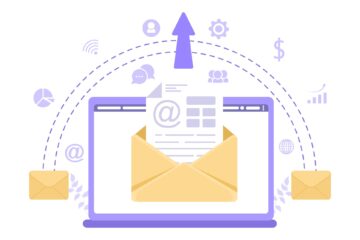You’re in the field. The game’s always on. And you know what? Every field sales representative, manager, or leader will tell you: The devil’s in the details.
But how often do we recognize the monumental role of specificity in sales negotiations? How can this nuance be the linchpin of trust, credibility, and ultimately, closed deals?
The Evolution of Sales Strategies
Field sales strategies refer to the tactics employed by sales representatives who engage directly with customers in their environment, be it their office, home, or any other venue.
This face-to-face interaction allows for a more personalized selling approach, building trust and addressing client concerns in real-time. Such strategies often involve detailed customer research, understanding regional nuances, and the ability to adapt important pitches based on the immediate feedback received during the interaction.
In the ever-evolving landscape of sales, the tactics and strategies utilized by professionals have witnessed significant transformations over the years. These shifts, both subtle and seismic, have largely been driven by the demands of informed customers and the rapid pace of technological innovation.
Nevertheless, as technology propels sales into a more digital age, the human touch in field sales remains a crucial aspect, anchoring sales processes in genuine connections and trust-building.
The Traditional Approach: The One-Size-Fits-All Model
In the annals of sales history, there exists a time when strategies were monolithic. Salespeople predominantly relied on cold calls executed from standardized scripts.
Comparing this approach to the technological landscape of the time, it is reminiscent of the era of floppy disks — limited in capacity and now obsolete.
This homogenized method, analogous to using a singular tool, say a hammer, for every conceivable task, proved not only inefficient but also deterred potential client engagement.
The Contemporary Paradigm: Emphasizing Customization and Precision
Transitioning from this outdated model, the sales domain witnessed a transformative shift towards customization and precision.
This wasn’t merely a trendy shift; it became the sine qua non of effective sales negotiation strategies.
But what catalyzed this transformation?
The contemporary customer is not only well-informed but also discerning. Armed with ample information, they possess an acute discernment capacity, making them intolerant to generic sales negotiation pitches.
The demand now is not for a one-size-fits-all offering but for a meticulously tailored solution. A cursory look at this transition begs the question: What catalyzed this shift from generic to specific sales negotiation strategies?
The Psychological Foundations of Specificity
Renowned field sales experts have long recognized that successful negotiations transcend mere product details or numerical data.
At its core, sales is a human-centered interaction aiming to forge a connection with the customer.
But why is precision in communication so pivotal in this endeavor? It’s largely because specificity taps into deep-seated cognitive biases inherent in human psychology.
Consider the “halo effect” as a prime example: one meticulously crafted detail, when presented compellingly, can cast a favorable light on the entirety of your proposal.
This isn’t just a nuance; it’s a formidable tool that harnesses human psychology to enhance the effectiveness of a sales pitch.

The Four Pillars of Sales Specificity
In the intricate dance of sales negotiations, precision and clarity are paramount. Over time, experts have distilled the essence of this precision into distinct foundational elements.
Let’s delve deeper into the pillars that serve as guiding lights, ensuring every sales negotiation or interaction is rooted in specificity, maximizing its impact and efficacy.
A. Tailoring Your Communication
Communication, when tailored, is analogous to a meticulously designed foundation of a house. Just as a robust foundation is critical for a house’s stability, strategic language and tone set the stage for impactful sales interactions.
By discerning the needs and preferences of the target audience, one adapts the language, tone, and content to align seamlessly with their expectations and understanding. This customized approach ensures that the message not only resonates but is also perceived as genuine and knowledgeable.
For example, when presenting a software solution to a healthcare provider, utilizing medical jargon and industry-specific terminologies not only reinforces your credibility but also establishes a rapport built on mutual understanding.
Hence tailoring your communication is highly beneficial in winning transactions and closing deals.
- Resonance with Audience: A tailored message is more likely to strike a chord with the potential buyer, facilitating easier negotiations.
- Builds Credibility: Demonstrating knowledge of industry-specific language and nuances heightens your credibility in the eyes of the prospect.
- Fosters Trust: Customized communication cultivates a sense of familiarity and trust, essential for long-term client relationships.
- Reduces Misunderstandings: Precision in language minimizes ambiguities, ensuring clarity in discussions and proposals.
- Enhances Engagement: When clients feel understood, they’re more engaged in the conversation, boosting the likelihood of a successful sale.
- Positions as an Expert: Leveraging industry-specific language showcases your expertise and commitment to understanding the client’s domain.
- Drives Decisive Actions: Tailored communication caters directly to the needs and pain points of the client, prompting quicker, more affirmative decisions.
B. Personalized Solutions
Personalized solutions entail adapting and presenting your product or service to align perfectly with the unique needs and challenges faced by the prospect. It’s about shifting from a generic presentation to a laser-focused offering that directly addresses individual pain points.
This approach begins by keenly listening to the customer, discerning their specific challenges, and then highlighting the aspects of your product that most aptly address those issues. The goal is to make the client envision your solution as tailored exclusively to their requirements.
When a prospect cites difficulties in team communication, for instance, instead of touting your software as a broad-spectrum productivity enhancer, zoom in on its unmatched communication tools and functionalities.
Here are some positive impacts of offering personalized solutions.
- Enhances Relevance: A personalized pitch elevates the relevance of the product in the eyes of the potential client, making it far more appealing.
- Demonstrates Attentiveness: Showing that you’ve listened and responded to the prospect’s unique needs fosters a strong sense of mutual respect.
- Increases Conversion Rates: When clients see direct solutions to their pain points, they’re more likely to invest.
- Builds Stronger Relationships: Tailoring solutions lays the groundwork for long-term, value-driven client relationships.
- Maximizes Product Value: By focusing on the most pertinent features for the client, the perceived value of your product escalates.
- Drives Client Satisfaction: A solution that hits the mark will not only lead to a sale but also to higher levels of client satisfaction and subsequent referrals.
- Differentiates from Competitors: Personalizing solutions sets you apart in a market flooded with generic pitches, positioning you as a thoughtful and innovative solution provider.
C. Addressing and Anticipating Objections
Addressing and anticipating objections refer to the strategic foresight in sales where potential concerns or hurdles raised by clients are predicted and addressed preemptively.
It’s the art of turning potential deal-breakers into deal-makers by being a step ahead in the negotiation.
This approach involves deep understanding and analysis of the industry, past client interactions, and common pain points, allowing the salesperson to foresee likely objections.
Once identified, these objections are tackled upfront during presentations or pitches, ensuring the prospect feels understood and valued.
Picture this: In a sales negotiation pitch for innovative software, knowing that data security is a common concern in the industry, the salesperson highlights the software’s advanced encryption features even before the client voices any security-related apprehensions.
So, be sure to address and anticipate objections prior to meeting any or all of those who are part of your negotiations. Here’s why.
- Builds Trust: Proactively addressing concerns demonstrates commitment and integrity, solidifying trust with the potential client.
- Streamlines Negotiations: By eliminating potential roadblocks early, negotiations progress smoothly, saving time and energy.
- Exemplifies Preparedness: This proactive approach showcases thorough preparation, enhancing the salesperson’s credibility and authority.
- Reduces Client Hesitation: By removing uncertainties upfront, clients are more inclined to move forward without reservations.
- Elevates the Sales Experience: It provides a seamless interaction where the client feels truly catered to and understood.
- Enhances Problem-Solving Abilities: Demonstrates the salesperson’s capacity to not just sell, but also offer solutions and alleviate concerns.
- Differentiates in a Competitive Landscape: In an environment where objections can stifle sales, foresight and proactiveness set you apart, offering a unique and refreshing sales experience.
D. Crafting Urgency through Relevance
Crafting urgency through relevance entails aligning a product or service’s value proposition directly with the pressing needs or objectives of the customer. Instead of using generic urgency tactics, this strategy is centered on highlighting how the offering can address immediate challenges or opportunities faced by the client.
To successfully craft urgency through relevance, a good salesperson must have a deep understanding of the client’s current situation, needs, and goals. Aligning the solution’s features or benefits with those needs is one way for the salesperson to frame the offering as not just beneficial, but timely and crucial.
Here’s a perfect example. Upon learning that a potential client is keen on improving their digital marketing efforts before a major product launch, a sales rep positions their marketing automation tool as the key to maximizing campaign impact just in time for the launch.
- Drives Immediate Action: Making urgency relevant compels clients to act quickly, recognizing the immediate value and potential missed opportunities.
- Builds Credibility: By avoiding blanket urgency tactics, salespeople show genuine understanding and concern for the client’s unique situation.
- Enhances Client Engagement: Clients are more responsive when they perceive the urgency as being directly tied to their needs.
- Maximizes Conversion Rates: Tailored urgency increases the likelihood of converting a prospect into a buyer.
- Showcases Value Proposition: It underscores how the product or service is not just beneficial, but timely and essential for the client’s success.
- Strengthen Client Relationships: It fosters a relationship based on understanding and tailored solutions, setting the stage for long-term partnerships.
- Differentiates from Competitors: Many competitors may push with generic urgency, but crafting it through relevance sets you apart, offering a bespoke and attentive sales approach.
Implementing Specificity in Closing Sales Deals and Negotiations: A 10-Step Guide
- Deep Dive into Prospect Research: Before any outreach, invest time in understanding your prospect’s industry, company, role, and potential pain points. Familiarity with their context lays the groundwork for tailored interactions.
- Leverage Analytical Tools: Utilize advanced analytics tools to gather in-depth insights about prospect behaviors, preferences, and engagement. This ensures your strategies are data-driven and not based on mere assumptions.
- Segment Your Audience: Not all prospects are created equal. Categorize them based on specific criteria like industry, company size, or pain points, ensuring you approach each segment with tailored strategies.
- Develop Personalized Value Propositions: For each segment, craft a unique value proposition that aligns directly with their specific needs and goals. Remember, it’s about how your product or service fits into their narrative.
- Adopt a Consultative Selling Approach: Rather than just pushing your product, focus on understanding and consulting. This allows you to suggest solutions that are highly specific to each prospect’s challenges.
- Anticipate and Address Objections: Use your understanding of the prospect to preemptively tackle potential objections, turning potential roadblocks into pathways for deeper engagement.
- Engage in Active Listening: During conversations, actively listen. This helps you pick up on nuanced needs and preferences, offering you ways to refine your important pitch in real time.
- Consistent Feedback Loop: After interactions, seek feedback. This not only showcases your commitment to serving them better but also offers valuable insights to fine-tune your approach.
- Continual Training and Upgradation: Sales strategies evolve, and so do customer needs. Regularly train your team on the latest best practices in specificity and ensure they’re updated on industry trends and shifts.
- Evaluate and Optimize: Finally, routinely assess the efficacy of your specificity strategies. Look at conversion rates, customer feedback, and engagement levels, and refine your approach accordingly.
By diligently following these steps, specificity becomes ingrained in the sales process, driving more meaningful engagements, stronger relationships, and, ultimately, successful sales closures.
Measuring the Impact of Specificity
Sales success has always been closely tethered to data and analytics. The clearer the data, the more transparent the road to optimization becomes. In the intricate dance of sales negotiations, specificity emerges as a crucial player.
But how do we measure its influence? The answer lies in tracking and understanding key performance indicators (KPIs).
Enhancing Customer Engagement
Sales is about building and maintaining relationships. When important pitches are specific, customer engagement improves. Tailored dialogues resonate with unique needs, boosting engagement over time.
Boosting Conversion Rates
Conversions are every sales strategy’s goal. Specific pitches address client pain points, increasing action chances. Comparing conversion rates before and after specificity shows a difference. Tailoring good pitches enhances resonance and conversions.
Elevating Client Interactions
Quality interactions matter. Do discussions delve into prospects’ needs? Specificity ensures this. Aligning proposals with prospects’ situations builds trust.
Harnessing Feedback and Testimonials
Client feedback gauges specificity’s effectiveness. Specific sales strategies earn appreciation. Testimonials build brand trust and attract prospects.
Shortening the Sales Cycle Duration
Specificity shortens sales cycles. Addressing prospects’ concerns speeds up the journey from lead to deal. Analyze sales cycles for pre and post-specificity impact.

Final Thoughts | Nailing Specificity
Sales and negotiations are shifting, with specificity as the key. Generic solutions no longer suffice; precision is a vital way to meet buyer demands.
Specificity builds trust, forges connections, and deepens understanding.
Personalized approaches boost credibility, outshining rivals. Addressing concerns upfront and creating urgency aligned with client needs spikes deal closures.
In evolving sales, one important fact holds true: Specificity isn’t just a good tactic—it’s the cornerstone of future triumphs. Embrace it fully, and see negotiations flourish.



